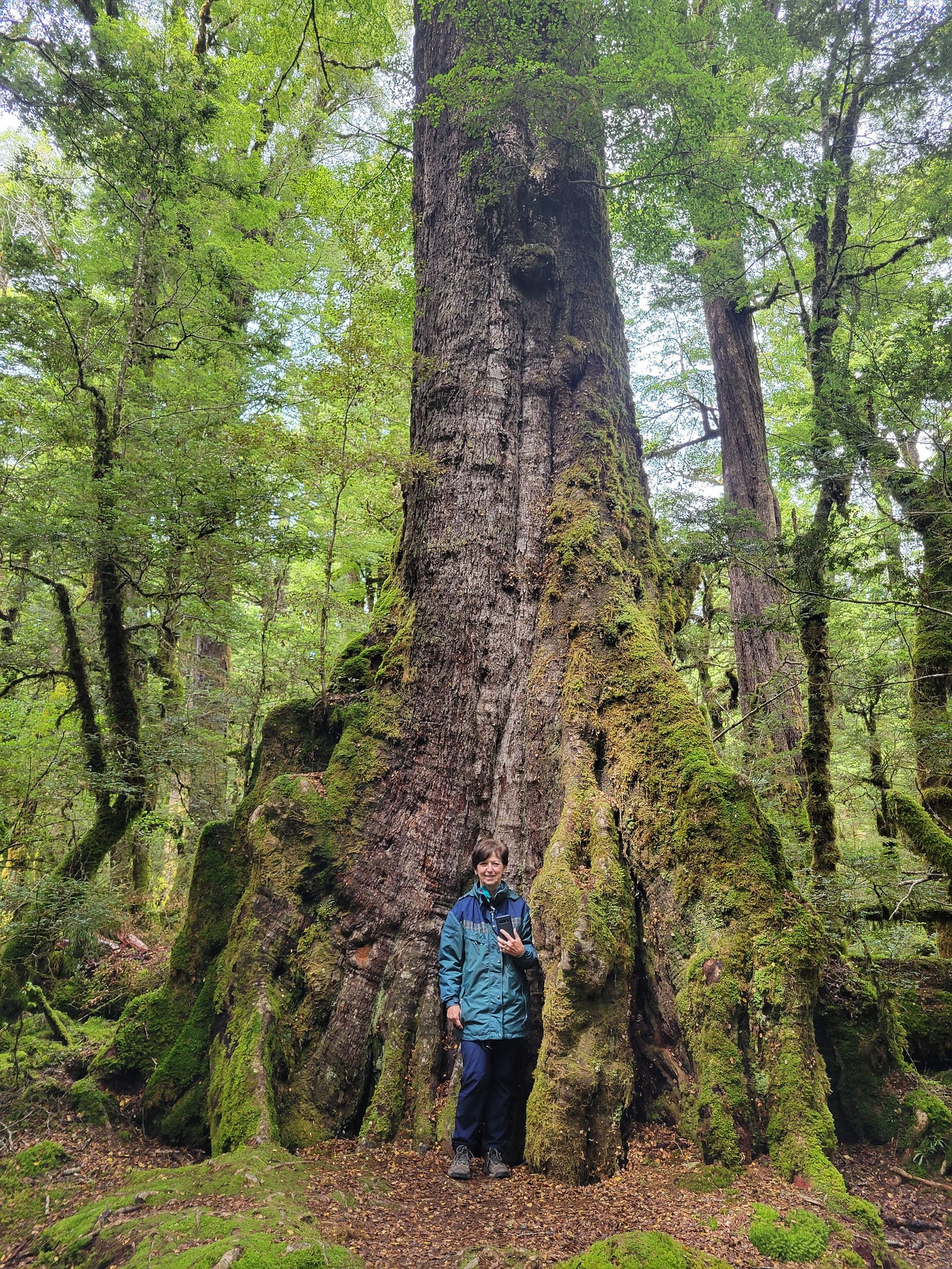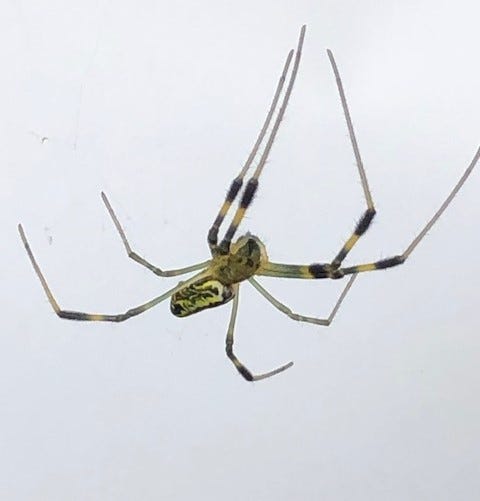This week’s issue is a hodgepodge of topics, partly because of how the main question turned out and partly because I’ve recently read some interesting follow-ups to earlier Natural Wonders questions.
For several years now, I’ve noticed this hole in the bank right across from our kitchen window. It’s a medium-sized hole, maybe the size of a groundhog, but we never see anything come out of it. Much of the year it doesn’t look used, but then at certain times (like during the past few weeks) it becomes obvious that something is living in there – the leaves at the entrance are removed and a small path develops right into the hole.
It must be some nocturnal animal, right? Are otters nocturnal? Maybe it’s Water Rat from Wind in the Willows and he and Mole will appear paddling a small skiff on their way to find Mr. Toad.
What’s the best way to figure out who lives in this hole? Set up a trail cam with night vision, of course!
Andrew set up the camera on a tree across the creek and I eagerly awaited the solution to the mystery. In the past when we’ve set up the camera on our property, we’ve seen plenty of deer, raccoons, and even a momma bobcat with three little kittens. After 3 days of constant filming, I expected our creekbank camera to reveal possibly a groundhog or a raccoon or even an otter, so imagine my surprise when we saw this image:
Whoa! Is that a coyote? The camera is only 20 feet from our house! Suddenly I’m very afraid for Toby… until I saw the next picture:
We don’t even have a cat. And we live half a mile from our nearest neighbors. No idea who this is.
Whatever lives in that hole would have definitely come out at some point during a 3-day span, unless there’s another entrance. The mysterious cat doesn’t live in the hole, so what does?
Then Andrew accidentally solved the mystery. While standing outside talking on the phone, he watched a pair of squirrels chase each other into and out of the hole over and over again. It’s squirrel mating season, and someone is playing hard-to-get. Apparently, the squirrels are using the hole as part of their coy, romantic obstacle course, resulting in the worn path that we mistook for a sign that someone had moved in. Whoever built this hole hasn’t been back in years – it’s simply squirrels racing through during mating season.
Such an anticlimactic reveal!
Are there any rivers that might be “captured” during my lifetime?
Follow up to How Does One Stream Capture Another?
Recently I wrote about how one stream can “capture” another and divert its flow to create large gorges such as the Nantahala Gorge in North Carolina and the Tallulah Gorge near me. Much of my research came from this site, which has moved since my previous post. Geologist Philip Prince describes how it takes eons for a river at a lower elevation to wear away a mountain range in order to capture a river on the other side.
Could something like that happen in an observable area in the near future? Would it be possible to witness a river capture? Dr. Prince describes a potential capture in Canton, N.C., which you’ve probably driven through on Interstate 40 if you’ve ever been on your way to Asheville, N.C.
In the image above, Hominy Creek (which loosely follows the contours of I-40) is close to intersecting with the Pigeon River. How close? The two are separated by a mere 1500 feet (450m) and 20 vertical feet. It is conceivable (though not necessarily likely) that a large flood of the Pigeon could overwhelm the banks and carve a flow into Hominy Creek, cutting down the small elevation difference between them.
If this happened, Dr. Prince describes a scenario where the waters of the Pigeon River would take a sharp right and carve a deep gorge on its descent to the French Broad River, 400 ft below. If you’d like to read more about how this could happen, and the interesting history about how Hominy Creek reversed its flow and completely changed direction, check out his website.
Find someone who looks at you like this guy looks at lichen
Follow up to How Does Lichen Survive on a Metal Gate?
I couldn’t help but think of last week’s lichen post when I came across this great short video of state botanist Jesse Miller excitedly describing various lichens.
Where in the world is Jenny?
Follow up to How Can I Tell How Old a Tree is?
I’m not sure the tree-aging method I’ve previously described works with this giant Red Beech or Tawai tree. Jenny and her husband Mike, friends of mine who lead our local hiking club, spent the past three weeks hiking and exploring New Zealand. Mike tells me they visited this tree “in a forest dominated by this species on the Lake Gunn Nature Walk in the Fiordland National Park in the southwest part of the South Island. It was truly an enchanted forest!” Notice the root buttresses on either side of Jenny that help hold up this massive tree.
Joro spiders – they don’t like electricity, but they are fine with civilization
Follow up to Do Spider Webs Conduct Electricity?
Most spiders prefer to live in the quiet of the forest where they can capture insects away from the dangers of people and power lines.
But researchers have recently discovered that the invasive Joro spiders, recently arrived in the U.S. from China, may be different than your average spider. One reason those of us in the southeastern U.S. are seeing immense numbers of these palm-sized arachnids each fall might be because Joros don’t mind the noise and vibrations that come from living in urban areas. They actually appear to prefer building webs near lights and human habitation. So, expect even more Joros in the South this fall…
Weird Nature:













I never thought much about how some of these massive gorges were created so river capture is fascinating. I wonder if that also applies to the New River Gorge in W. Virginia? I recently discovered the New River, which runs along Highway 16 N of US 40 here in NC (and near me) is 350 miles long and is the oldest river in NC, the oldest river in the Western Hemisphere and, at 300 million years, is the second oldest river in the world. The Nile is the oldest. I wonder how they date rivers? I assume from the sediment in the bed of the river? Would you happen to know the answer to that? I should research it I guess!
I ❤️that Elf Cup Fungus and all hail the likeable lichen!